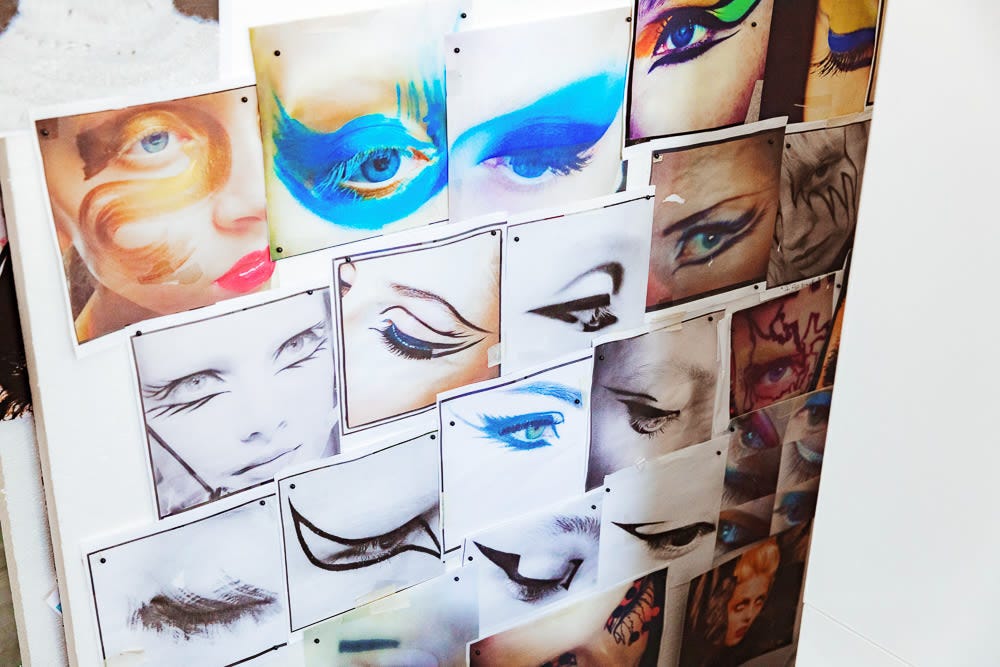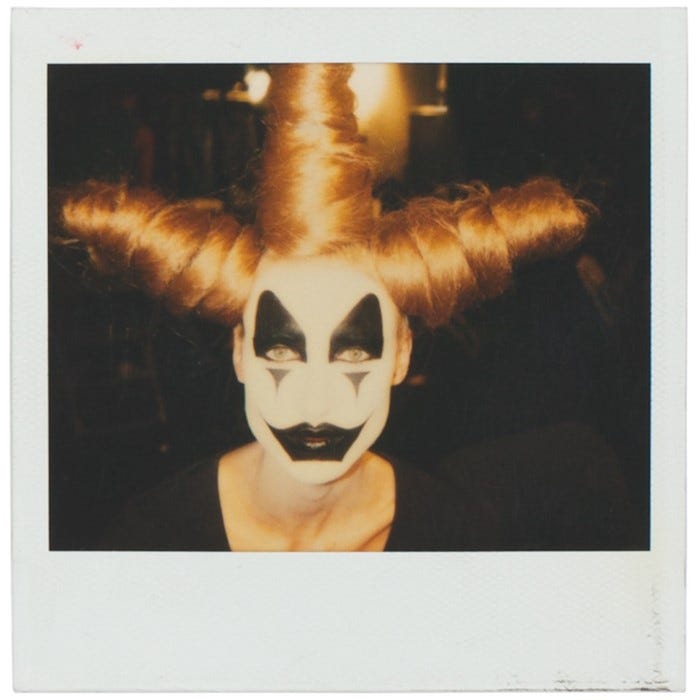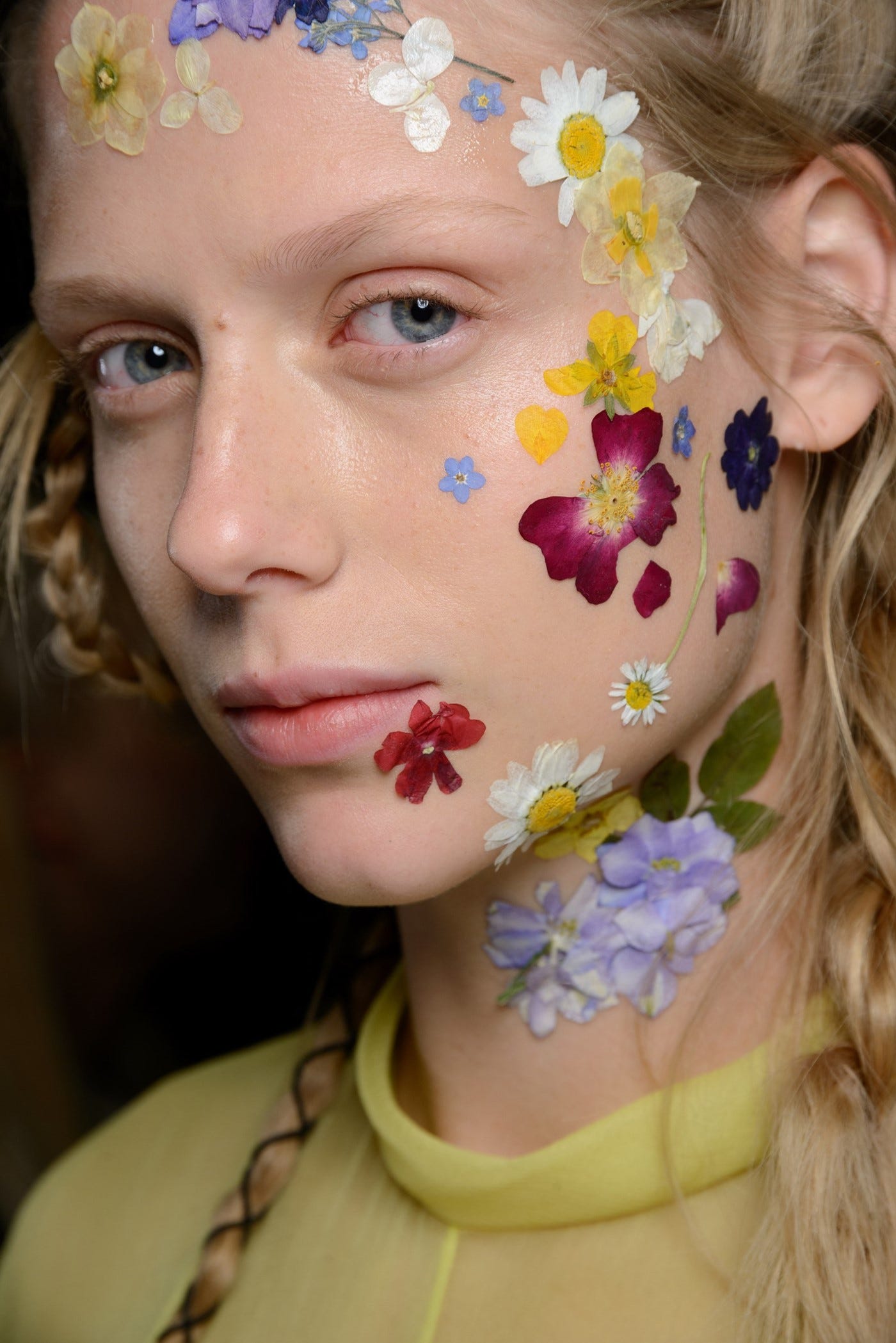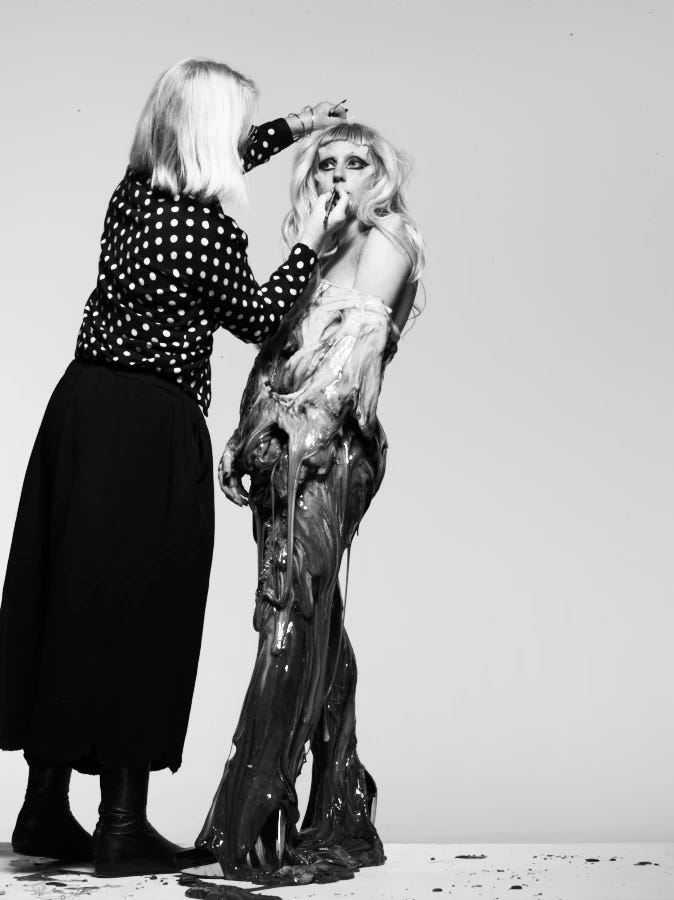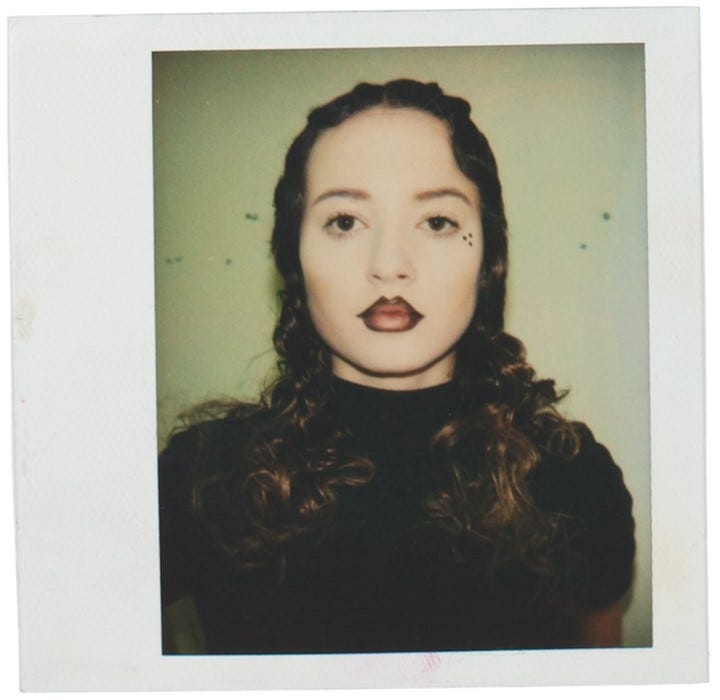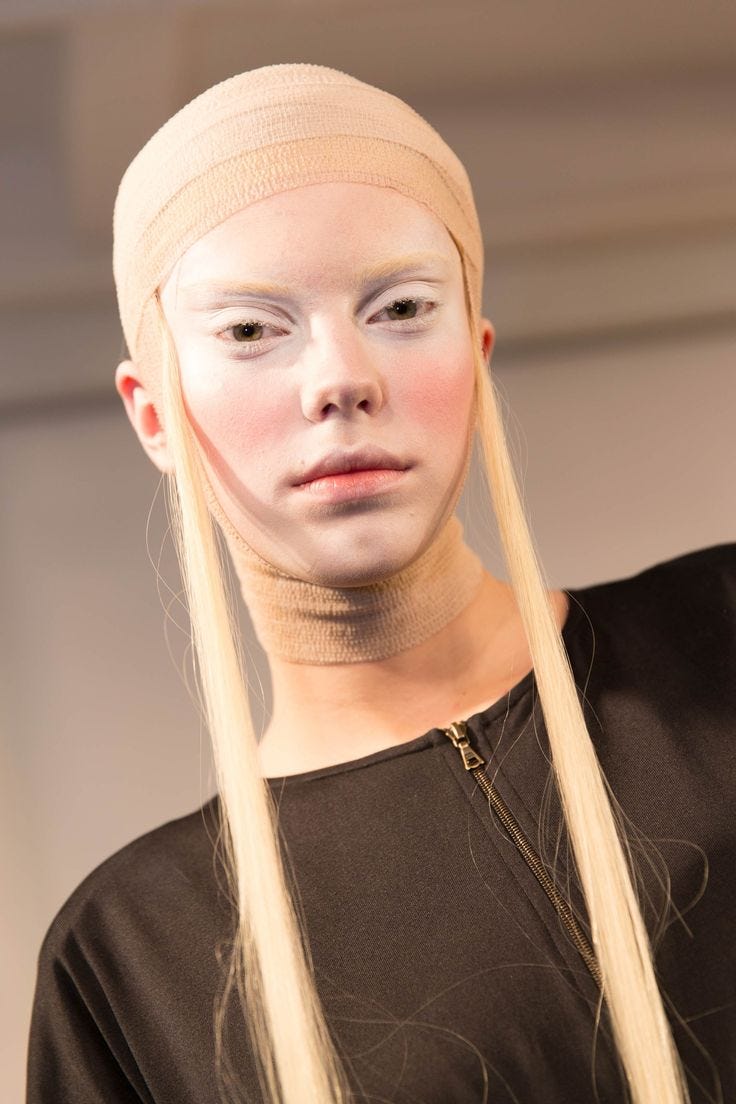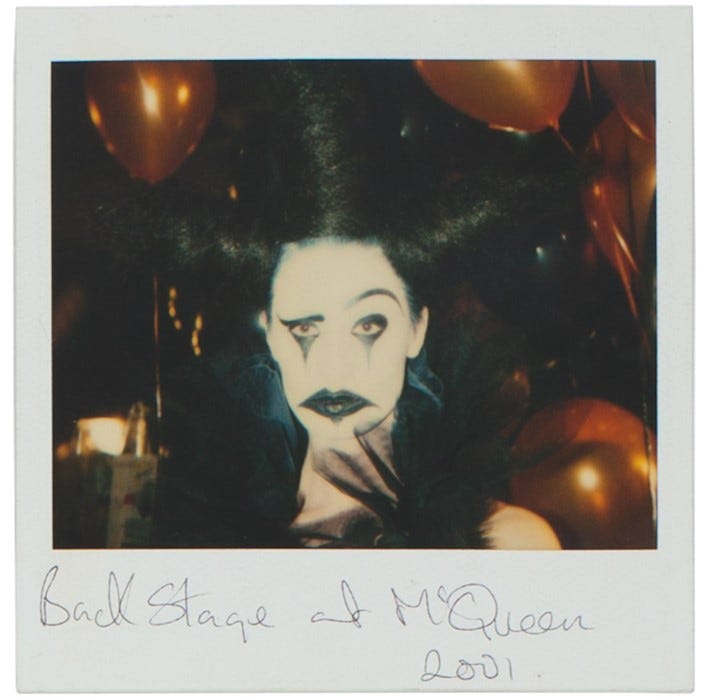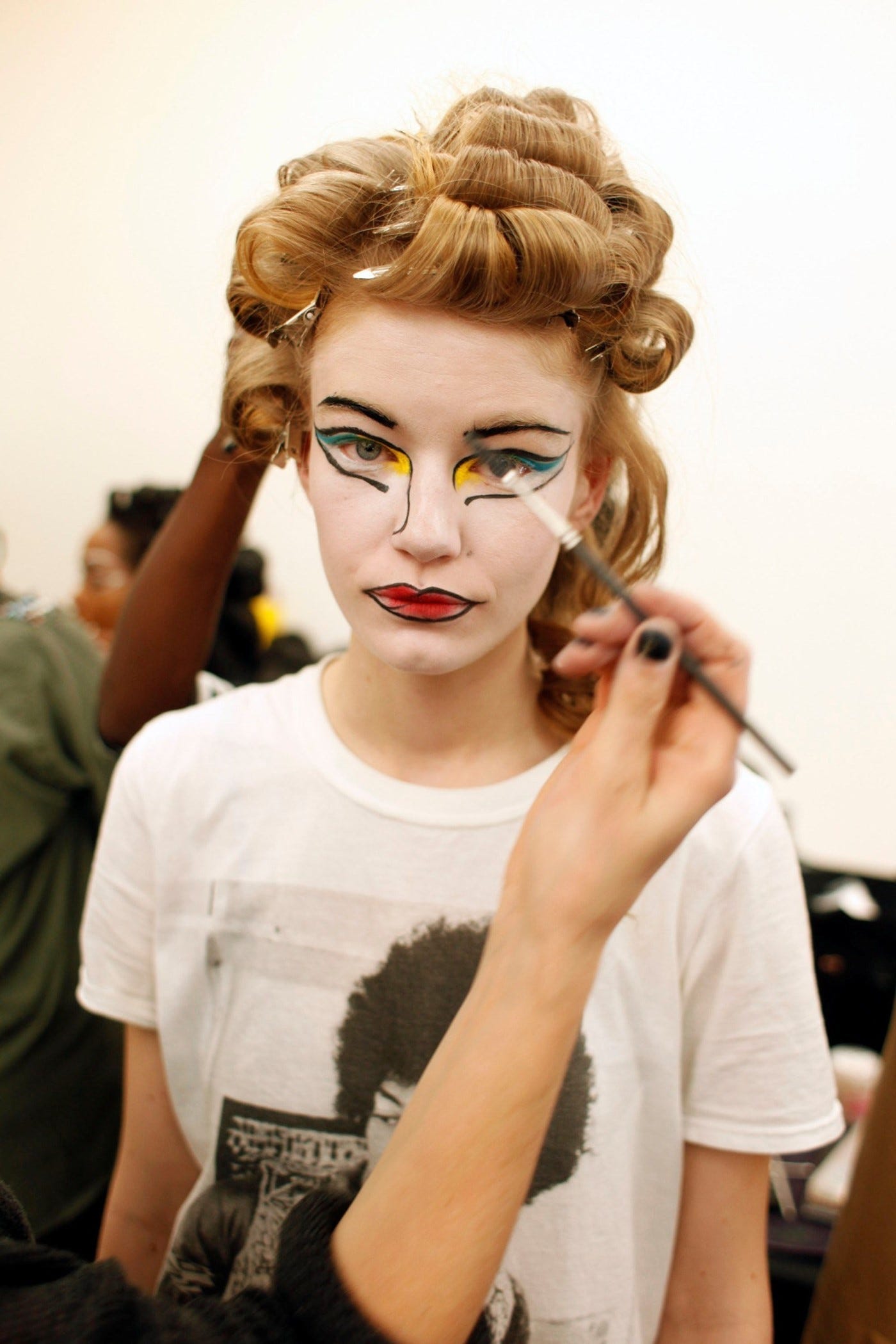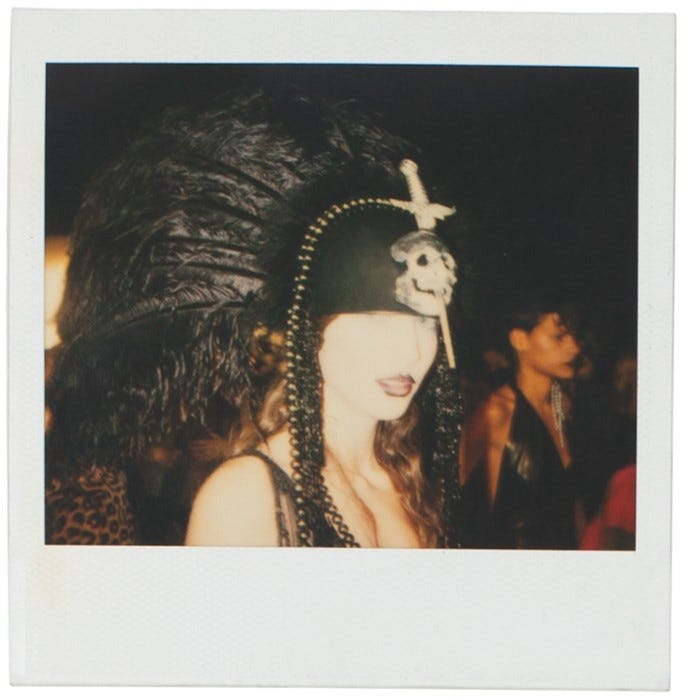The Makeup Artist Who Made Messiness a Masterpiece
About Val Garland: From Clubbing in Soho to Iconic Dior Campaigns
Over the holidays, I finally had time for aimless research—a luxury I treasure. It was a chance to stumble across new ideas during my time in Switzerland and England, revisit forgotten ones, and dive deeper into topics I’ve meant to explore. Much of what I found will likely make its way into BLUE MIND over the coming months, and I can’t wait to share more newsletters on these fascinating discoveries.
In this spirit of exploration, I came across an artist whose work is far outside my usual categories. While my interests range widely (as you’ve probably gathered by now), there are still areas where I’m admittedly clueless—and makeup is one of them.
I’ve always respected the craft but haven’t actively sought it out. My brief flirtation with makeup tutorials in the early 2010s stemmed more from their calming ASMR quality than a desire to master contouring. Everything I know about makeup and skincare comes from recommendations by friends who are genuinely invested in the subject.
That said, as an art director, I frequently collaborate with makeup artists. I brief them, rely on their expertise, and admire their work—but it’s often invisible in the final image. Like perfectly calibrated lighting or seamless editing, good makeup blends into the overall vision, quietly elevating everything else.
So imagine my intrigue when I stumbled upon Val Garland’s makeup for Alexander McQueen. It made me pause, take a second look, and focus on the makeup itself—creative, daring, and unapologetically bold.
This sent me down a rabbit hole of Garland’s work, campaigns, and her rather unconventional life story. Instead of looking at these campaigns through the usual lens of a photographer or creative director, I wanted to highlight the unique perspective of a makeup artist and the crucial, sometimes under appreciated role they play in shaping iconic visuals.
The Life of Val Garland
Val Garland describes herself as having been a strange kid—a bit of a loner who found solace in self-expression. She would cut her own hair and wear a lot of makeup, a lot, not because she was chasing traditional beauty but because she craved visibility. For her, beauty was about standing out, about creating something unexpected.
Growing up in Bristol during the heyday of subcultures, she absorbed influences from the New Romantics, Punks, Goths, New Wave, and countless other movements that defined the era. These subcultures were visual playgrounds, each brimming with creativity and rebellion. They shaped her aesthetic—a kind of creative eccentricity that’s flexible enough to meet client briefs but always carries a strong, unmistakable signature. Her work is layered, spontaneous, and complex—often making you pause to take a second look.
But how did she arrive at this point? Garland’s journey wasn’t linear, nor was it predictable. When it came time to decide on her path after school, she wanted to go to university. However, her middle-class upbringing couldn’t accommodate that dream. As a form of quiet rebellion, she took up an apprenticeship as a hairdresser, only to quickly discover she hated it. Still needing a job, she left hairdressing and pursued what she believed was the “job of the future”: programming. But her stint as a programmer lasted just one day. She quit and took a job as a secretary instead, only to find herself bored again—not just with the work but with her life.
On a whim, she decided to move to Perth, Australia, with her boyfriend. Within 14 months of arriving, she returned to hairdressing, this time launching her own salon. This move proved to be the real beginning of her creative journey. The salon became her playground, a space where boredom couldn’t creep in. She curated her staff carefully—only hiring people who weren’t “ordinary.” They had to look special, even weird. That was her hiring criterion. The salon wasn’t just a business; it was a community of like-minded misfits, a space that reflected her aesthetic ethos.
But Garland is impulsive by nature. One day, she sold the salon, divorced her husband, and moved back to London. Before leaving Australia, she had been vocal about her interest in makeup artistry. Some of her creative clients at the salon connected her with photographers. Fifteen years later, one of those connections—through a former styling assistant—landed her a gig with photographer Sam McKnight.
Once back in London, Garland started working as a makeup artist. Her career took off, not through traditional networking but through late nights spent partying in the vibrant, chaotic scene of 1990s Soho. (Side note: I’ve met so many people in the industry who’ve relied on this approach—maybe a topic for another post?) Her booker at the time had strong ties to people like Kate Moss and Jess Hallett, so Garland found herself clubbing and bar-hopping with the era’s most influential creatives.
Soho in its heyday had a profound impact on Garland. The clubs were where she learned the power of visual individuality. Whether shocking, ugly, or beautiful, it was about making a statement. The more outrageous you looked, the easier it was to get past the velvet ropes. Garland’s aesthetic became deeply rooted in this ethos of raw self-expression, shaped by the vibrant subcultures that thrived in London at the time.
But those days are gone. The iconic clubs of Soho have been replaced by sterile chains, like a Häagen-Dazs café. The seedy underbelly that once nurtured creativity has been smoothed over by gentrification. (Oh no, here I am writing about gentrification again. For more on that, check out my post on FRUiTS Magazine.) With those spaces gone, so too is the raw energy that once defined the area.


Work
Through the underground clubs of Soho, Val Garland pieced together a career that is now firmly etched into fashion history. Trial and error defined her early years as she navigated her way toward collaborators who appreciated her eccentric, maximalist approach. Being entirely self-taught was part of her allure. Reflecting on her start, Garland often says she was fortunate to have crafted a career in makeup during the 1990s. The grunge movement, with its preference for simplicity and rawness, meant that technical perfection wasn’t as crucial—you could experiment and grow along the way. The looks were pared-down, natural, and forgiving.
Even now, Garland acknowledges that kids today might know more about makeup technique than she does, thanks to the ubiquity of YouTube tutorials. But that doesn’t faze her. For her, makeup has always been about artistic vision. It’s about creation, spontaneity, and intuition.
Her process is rooted in improvisation. She thrives on the unpredictability of a shoot or set, adapting and evolving as the environment changes. Makeup, hair, styling, lighting, and location all interact—they create the bigger picture. Plans can shift in an instant, and for Garland, the magic lies in making it work seamlessly. It’s about ensuring that every element contributes to a cohesive whole, even if that means scrapping a great idea in favor of something entirely new.
At the heart of her work—and the iconic campaigns she’s helped create—is collaboration. It’s tempting to mythologize a creative director or makeup artist as the solitary genius behind a project, but that narrative couldn’t be further from reality. Great work, according to Garland, is the product of many hands, many minds, and a shared vision. You have to be a team player before you’re an artist. It’s a philosophy that has defined her best work, from her collaborations with Sam McKnight to Mario Testino. Garland thrives in teams that are fast, enthusiastic, and ego-free—teams that work toward the greater good of the project.
This ethos is why she and her collaborators have created some of the most groundbreaking work in fashion history. Together, they set the trends of the 1990s, producing daring editorials, visionary campaigns, and unforgettable moments like the Alexander McQueen Spring/Summer 1999 show. For that iconic presentation, Garland oversaw a team of 25 assistants. Because again, it’s all about teamwork.
Garland is, at her core, both a risk-taker and someone with an entrepreneurial mindset. Her career has been motivated by a desire to escape boredom—or perhaps more precisely, by a pursuit of fulfillment. Yet money was never her focus, and she credits luck as a major factor in her success. Her career is the result of one strange opportunity after another, coupled with her openness to taking risks. In her own words, she lives by the mantra:
“What if? Why not? If it doesn’t work, pick yourself up and start again.”
Alexander McQueen
Through her network, Val Garland was asked to do makeup for a designer who was, at the time, largely unknown to her. That designer was Alexander McQueen, and this opportunity would change the trajectory of her career forever. It was one of those rare moments of being in the right place at the right time. Her first show with McQueen was Spring/Summer 1995, The Birds. His aesthetic—dark, edgy, and slightly romantic—aligned perfectly with her own.
Their creative synergy kept her coming back. Over the years, Garland worked for some of the most iconic moments in fashion history: the Spring/Summer 1999 show. This was the moment when robots spray-painted Shalom Harlow’s dress live on stage, a hauntingly beautiful spectacle that has since become legendary.
Garland recounted how none of them—neither the makeup artists nor the rest of the team—knew exactly what the robots were going to do. Their purpose and function were kept a closely guarded secret until the show itself. It wasn’t until she saw the robots in action, spraying the paint across Harlow’s dress and face, that she realized the profound beauty of the moment. The paint seemed to finish the look, enhancing her makeup in a way that felt almost poetic. Once again, it was a testament to the power of collaboration, even when that collaboration included machines.
For Garland, it was a simple yet profound moment—one that exemplified how something spontaneous and unexpected can become unforgettable. A piece of fashion history, created in part through the interplay of vision, experimentation, and teamwork.
Vivienne Westwood
Val Garland’s long-standing collaboration with Vivienne Westwood stands as another testament to her significant voice in the world of fashion. What began as a distant admiration—ordering Vivienne’s pieces all the way to Australia in the early ’90s, an impressive feat at the time—eventually evolved into a working partnership that cemented Garland as part of Westwood’s creative vision.
It was Sam McKnight who recommended Garland to Vivienne Westwood, having already worked with her himself. However, their first collaboration didn’t go entirely as Garland expected. After she meticulously finished her makeup looks, Vivienne smudged them. The reason? They looked _too perfect_. Garland assumed she’d never be booked again.
But instead of letting that setback discourage her, she returned to the next job with a new perspective. She approached the makeup with a more painterly, childlike sensibility, intentionally embracing imperfection. She began experimenting with products in unconventional ways—lipstick as eyeshadow, foundation smeared with fingers, colors that clashed or bled into one another. This approach resonated deeply with Vivienne’s ethos.
Over the years, Garland’s understanding of subcultures, her playful experimentation, and her deep artistic intuition found a natural home in Westwood’s universe. Their collaboration grew into a shared language of beauty—bold, disruptive, and full of cultural references. Garland’s ability to translate Vivienne’s irreverent vision into makeup looks that felt raw and expressive helped bring their shared artistry to life.
About Westwood, Garland has said: “Her knowledge—her history of everything to do with art, history, fashion, textiles, fabrics, patterns, whatever—is unsurpassable.” It seems that the admiration between the two women was mutual, and their work together created some of the most daringly unforgettable beauty looks in fashion history.
Dior
One of the defining moments in Val Garland’s career was her contribution to the iconic early 2000s Dior ad campaigns, created in collaboration with John Galliano and Nick Knight. These campaigns were revolutionary in many ways, driven by Galliano’s unique approach to creative freedom. Unlike the typical rigidity of fashion advertising, where visibility of a shoe or handbag often takes precedence, Galliano wasn’t concerned with such conventions. He didn’t care if the clothes got dirty or if the campaign veered into chaos—it was all about the final image, the fantasy it evoked.
The energy of the team Galliano surrounded himself with was integral to the success of these campaigns. Each person shared a sense of fervor and commitment, all believing in the vision they were collectively crafting. This spirit of collaboration and creative experimentation was what made these campaigns groundbreaking. At the time, Dior was pivoting toward a younger audience, blending street culture with the excitement of pop aesthetics, all while infusing touches of Dior’s historical couture heritage.
One of the key factors in the brilliance of these campaigns was time—something rarely afforded in today’s fast-paced fashion world. Back then, Dior had the resources to invest in extended shoots, often spanning four or five days. This allowed for an unparalleled level of experimentation. With that time came the space to take risks, to try new ideas, to discard what didn’t work and refine what did. It was the freedom to develop a concept with the team and push boundaries. This luxury of time, sadly absent in many of today’s campaigns, is evident in the lifeless white backgrounds and rushed imagery often produced in the modern era. The recessionary mindset shows in the visuals, and it’s hard not to feel the difference.
Take, for example, the Dior Spring/Summer 2001 campaign. The initial concept was loose—they knew cars would feature prominently, but nothing else was set in stone. On set, however, the team made the spontaneous decision to get sexy, raunchy, and unapologetically dirty, both literally and figuratively. The model was covered in spray paint, then layered with oil, taking “dirty” to an almost visceral level. The images were shot from high above, with the camera angled down, zoomed in so tightly that the car in the background became an abstract blur.
The result was mysterious and provocative. Why is she covered in paint and oil? Where did she come from? Did she escape from something, or was she on some wild adventure? These questions pull the viewer into the narrative, sparking curiosity. The images weren’t about selling a dress or a handbag explicitly—they told a story. And through that story, they sold the idea of Dior as something daring, imaginative, and utterly magnetic.
These campaigns were loud, flashy, and kitschy in a way high fashion had never seen before. Yet, they captured the zeitgeist of the era perfectly. By blending theatricality with raw edge, they created a visual language that was as unconventional as it was unforgettable. And in an industry that thrives on novelty, the risks they took paid off.

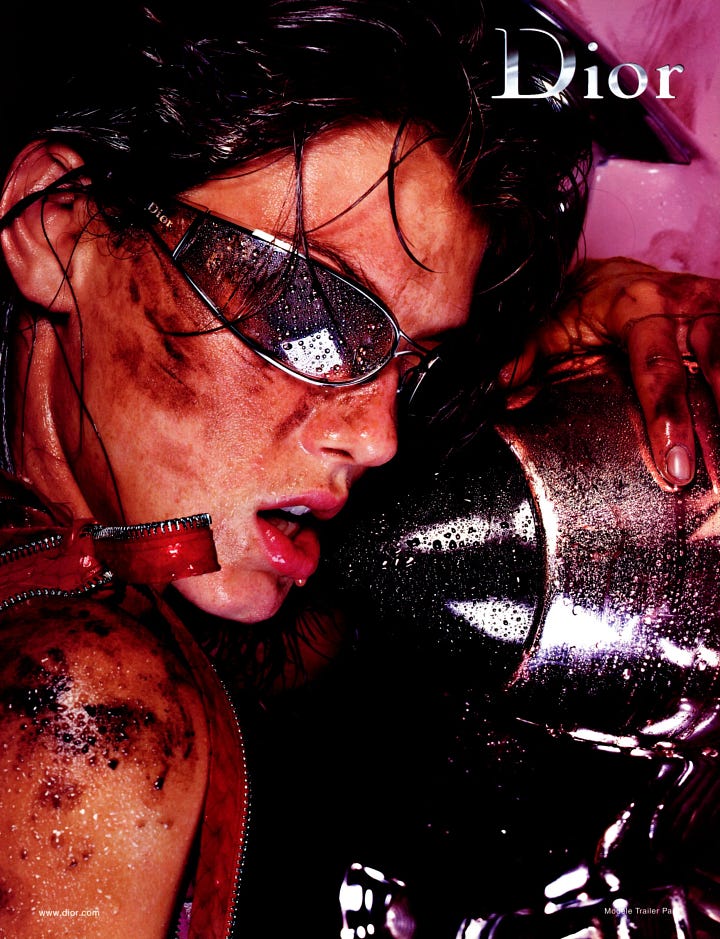
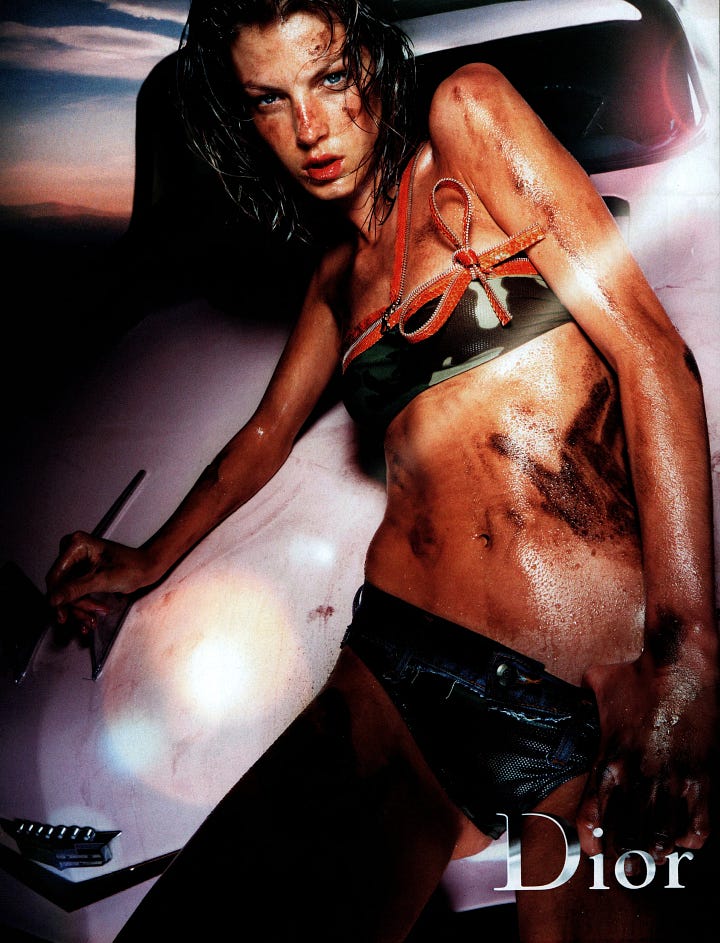

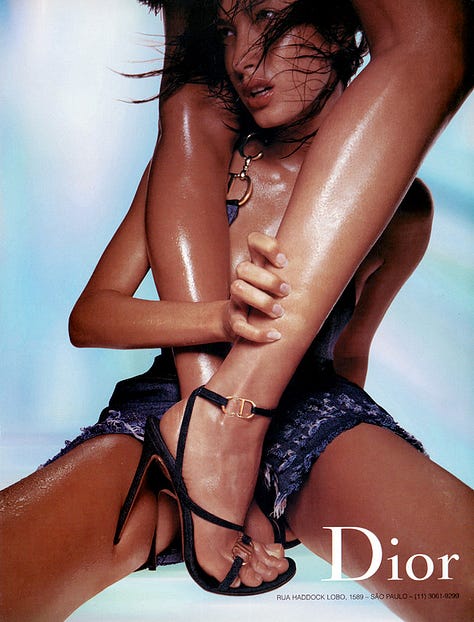

Insights
Teamwork is Everything
At the heart of Garland’s career is collaboration. The best campaigns aren’t the product of one “creative genius” but the collective effort of many experts, each contributing their unique vision. Her partnerships with figures like Nick Knight, Sam McKnight and Mario Testino underscore the importance of working together toward a shared goal.
Understand Subcultures
Growing up surrounded by the subcultures of 1980s England gave Garland an authentic, layered perspective that informed her work with McQueen and Westwood. Her deep connection to these movements allowed her to channel their raw energy into high fashion makeup.
Take Risks, Embrace Boredom
Garland’s career is a testament to the value of bold, sometimes impulsive decisions. From moving to Australia on a whim to pivoting back into hairdressing before discovering makeup, her path reminds us that boredom can be a compass, pointing us toward what we need to change.
Start Somewhere
Garland’s start in hairdressing laid the foundation for her makeup career. Even jobs that seem unrelated can connect in unexpected ways, as her salon clients in Australia later introduced her to key collaborators in London.
This newsletter feels like a bit of an experiment (as I feel I say every week)—diving into the life of an artist whose work I respect but don’t fully understand technically. It’s a departure from my usual topics, but I hope you found it as inspiring as I did.
On a personal note, January will be an exciting month for me as I move in with my partner—a milestone that’s been months in the making and one that I’m sure will inspire future newsletters. Thanks for coming along for the ride, especially if you’re new here.
Cheers,
Kimberly




